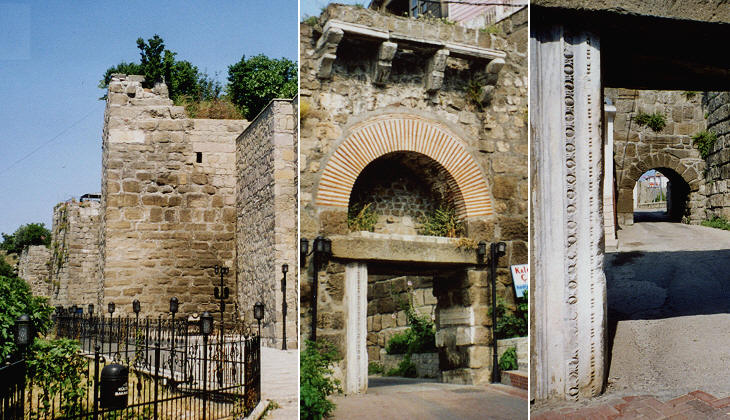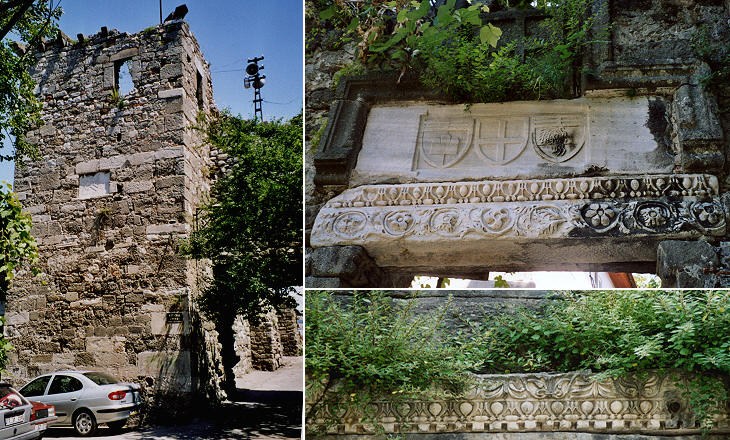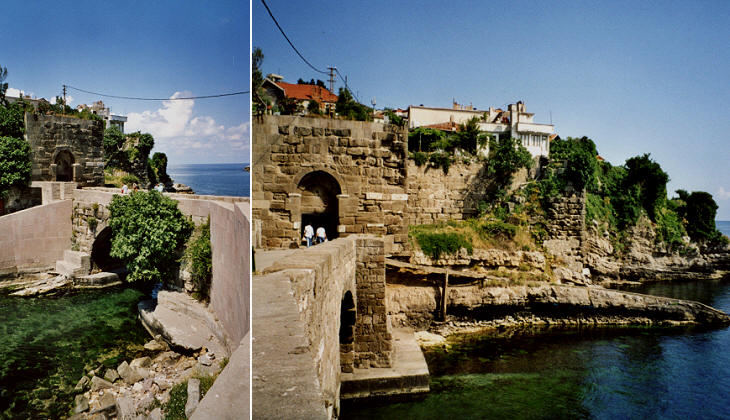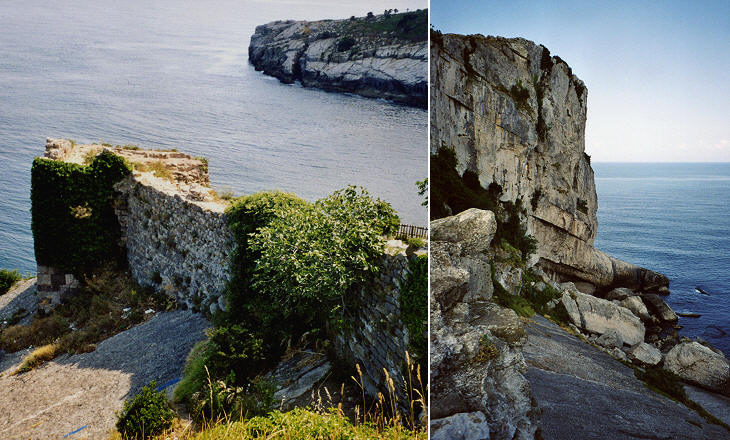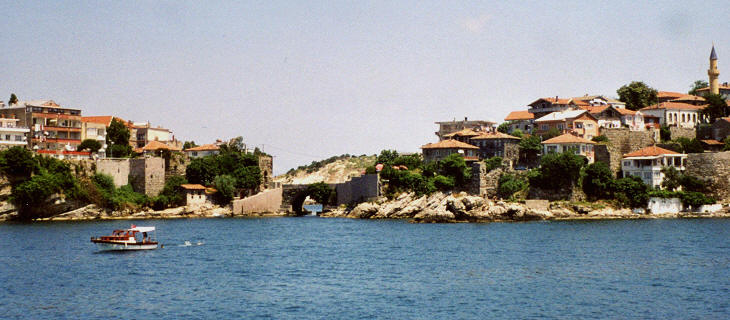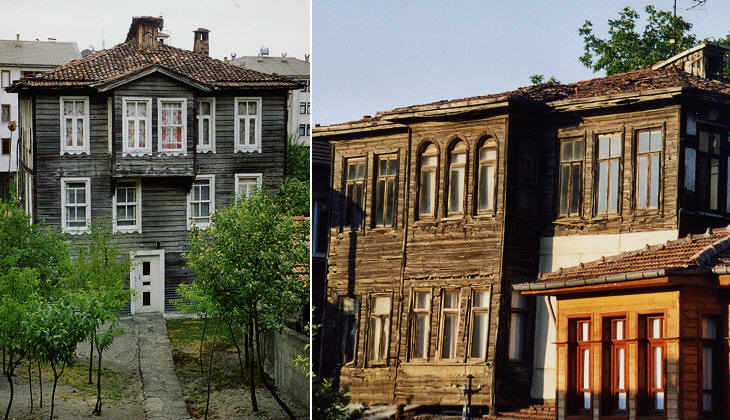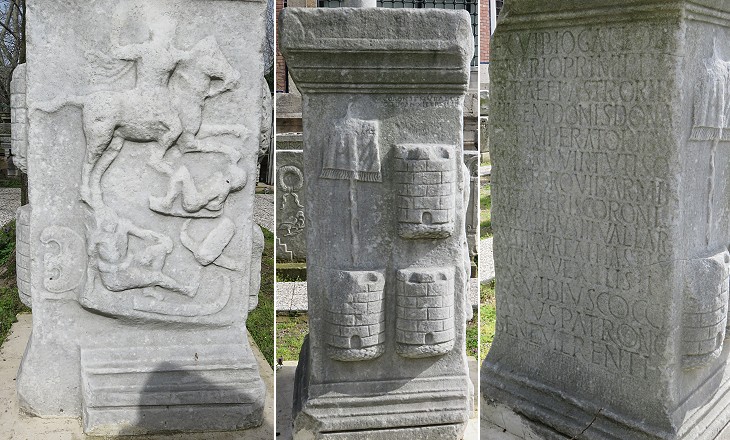  What's New! Detailed Sitemap All images © by Roberto Piperno, owner of the domain. Write to romapip@quipo.it. Text edited by Rosamie Moore. Page revised in June 2015. |
 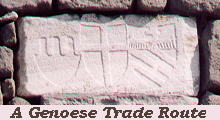 Amastri Amastri(relief showing the coat of arms of Genoa at Amastri) The Phoenicians who first sailed the Black Sea certainly noticed a repaired site between a hill projecting from the coast and an islet very close to it. In the VIth century BC seamen from Miletus founded a colony called Sesamos in that location. The town later on became part of the Kingdom of Pontus and it was called Amastri (today Amasra). The Romans conquered Amastri in 66 BC and under their rule the town flourished as a base for the trade routes towards the Crimean peninsula and Trebizond (today Trabzon).
Genoese merchants settled in Amastri in the XIIIth century and their influence grew to the point that the town became a city-state ruled by them. They built new walls or strengthened those built by the Romans and the Byzantines. In doing so they used elements of former pagan temples (in the background of this page you can see a Roman relief).
The hill on the mainland was additionally fortified with a citadel, of which a few towers still exist. The citadel as well as its outer walls is decorated with several coats of arms of the Genoese rulers. The symbol of Genoa is the cross of St. George.
The Romans built a bridge to link the two hills of Amastri. The access to the islet was fortified so that a last defense was possible even if the assailants had breached the outer walls and conquered the citadel.
The islet had walls protecting it from attacks from the sea, although its precipitous rocks were by themselves a very effective defense.
After the fall of Constantinople in 1453, both Venice and Genoa became aware that the Ottomans, led by Sultan Mehmet II Fatih, were in the process of building a powerful and stable empire. They tried to lessen this threat by encouraging the autonomous kingdom existing in central Anatolia (Karaman) and the rulers of Persia who occupied most of eastern Anatolia, to incite revolts in the Ottoman Asian possessions. Mehmet II decided to break the links between his open or potential European and Asian enemies and in 1461 moved by sea and land along the coast of the Black Sea to conquer the remaining Latin and Greek ports. Amastri fell to the formidable threat of the Ottoman cannon.
During the Roman period Amastri was also important because of the timber which was shipped from its port. It came from Parthenium (today Bartin) a town in the middle of large forests. Emperor Claudius built a road between Partenium and Amastri to facilitate the shipping of timber.
 Move to: Galata Anadolu Kavagi Kilyos/Rumeli Feneri Sinope Clickable Map of Turkey showing all the locations covered in this website (opens in another window).  SEE THESE OTHER EXHIBITIONS (for a full list see my detailed list). 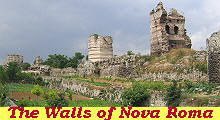  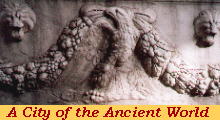 |
